How Exploring Southern Ukraine Changed My Perspective on Travel

Important note from the author: At the moment, a few southern regions of Ukraine — including Kherson, Mykolaiv, and Crimea — are sadly battlefields as Ukrainians fight for their sovereignty. This article, therefore, should not be viewed as travel advice. Instead, it is a story of appreciation for traveling locally, wherever you are, staying curious, and connecting with the local communities.
South of Ukraine has never been on the front pages of glossy international travel magazines. “Why, oh why, is that the case?” I kept wondering as I planned my travel itinerary. Scenic canyons, postcard-perfect pink salt lakes, the unique Kinburn Peninsula — home to a population of pink pelicans and the largest orchid field in Europe. If that didn’t deserve some good press, I thought, what did?
In all honesty, before the full-scale invasion, Ukraine was an up-and-coming travel destination. Historic and stunning Lviv impresses with its architecture and vibrant food scene. Kyiv has a one-of-a-kind vibe of freedom. The Carpathians are appreciated for kilometers of hiking trails perfect for those seeking solitude.
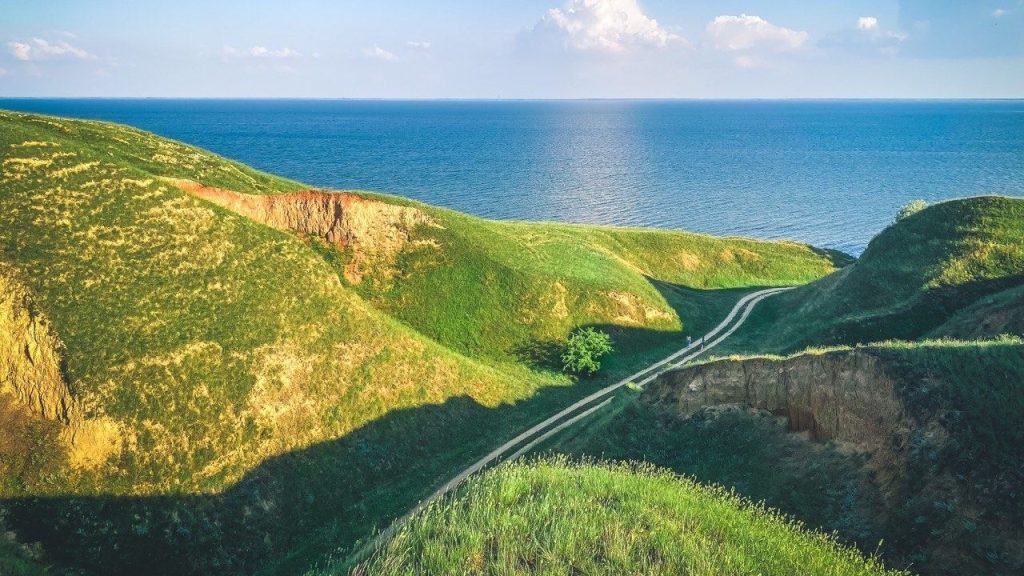
Ukraine’s South hits differently, however. Less polished, more undiscovered. Think: kilometers of white sandy beaches along the coast of the Black Sea. Imagine fields of tomatoes and watermelons ripening under the persistent southern sun.
There’s even local wine production and oyster farms. Pretty bad roads and not that many great hotels in remote areas maybe that’s what always held the region back a bit.
But I was ready to explore, potholes or not. So I packed my bag, popped it in my car along with some good music and favorite snacks, waved Kyiv goodbye, and drove towards the South.
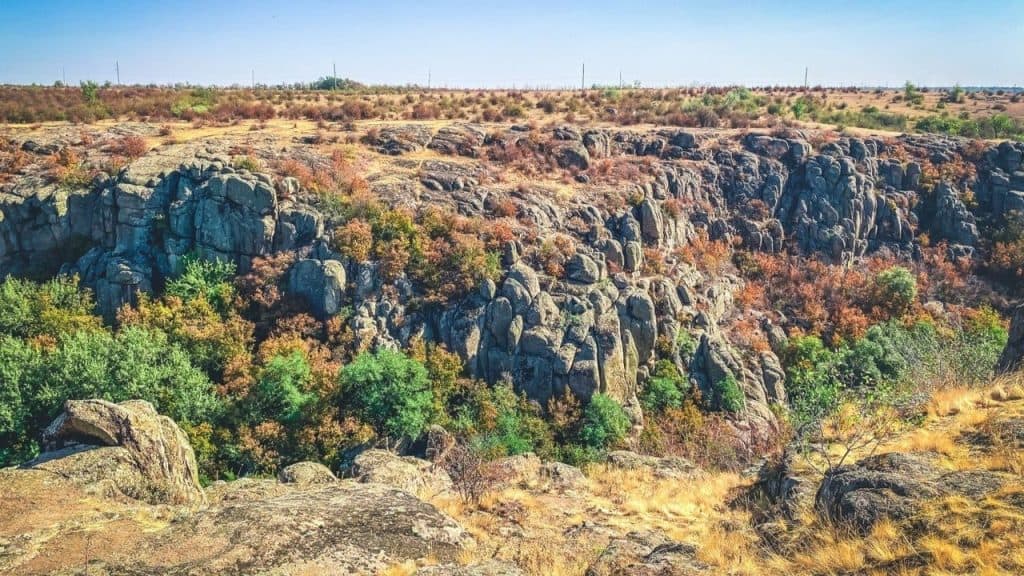
Ukraine is known for its vast steppes in the east and south. My travel itinerary suggested that somewhere amidst those steppes, there was an epic crack—Aktove Canyon. Carved out by the river Mertvovod, it’s a unique granite canyon and a national park that spans 250 hectares. Perfect for hiking and camping, Aktove had been on my bucket list for years, and I was excited to finally see it.
But as I drove into a small village, a gateway to the canyon, I thought my GPS had brought me to the wrong place.
Empty and dusty roads. Not a soul in sight. No sign of a canyon, either. I slammed the brakes fast as a rogue chicken sprinted across the road possibly overjoyed to see a visitor. I pulled over by a blue house, the sign saying it was a local café. Got out of the car, knocked on the window. A smiling woman came outside and, without letting me say a word, waved in the direction of her backyard:
“Hey there! Past the tomato beds, past the well you’ll see a door in the fence. The trail from it leads straight to the canyon. It should take you around two hours to explore properly, and in the meantime, I’ll make you some varenyky (a local type of dumpling) with cherries and sour cream.”
And that was it. The local approach to doing travel business. This woman lived quietly in a small village, with a stunning canyon practically in her backyard. A canyon I got to properly hike, swim in the river, gaze at the centuries-old granite formations, and then return safely to the blue house and a steaming bowl of varenyky.

Lake Lemuria is another surprise along the route across the south of Ukraine. You’d never guess, driving the muddy roads deep into the steppes and past the windmills, that somewhere out there, hidden in plain sight, it’s waiting. Its pink water absolutely mesmerizing.
The lake owes its color to algae that produce loads of beta-carotene. Lemuria is very salty and known for its healing properties. Not the best bathing spot if you’ve got cuts or bruises — those will sting — but it offers a fun swimming experience, as you can pretty much sit on the water reading a book. Not quite the Dead Sea, but very close, plus the perky color.
Traveling in September, I was one of just a few visitors hanging out by the lake. Scorching heat might’ve been another reason why not many people were there. I would’ve left after a swim to seek shelter from the sun, too. But I had an agenda.
Desperate to capture the color of the water, I unpacked my drone. A bold move for someone who had just bought it and was about to fly it for the first time over water. Oh, I was determined.
A couple of failed attempts later, I heard cheering behind me. “Go on, love, give it another go,” one local said, while actively rinsing off the salt with fresh water after a swim.
And I did! One courageous drone loop above the water later followed by a round of applause and even more cheering I popped my bag and drone back into the car and drove off, completely happy. I managed to capture some stunning footage to revisit later.
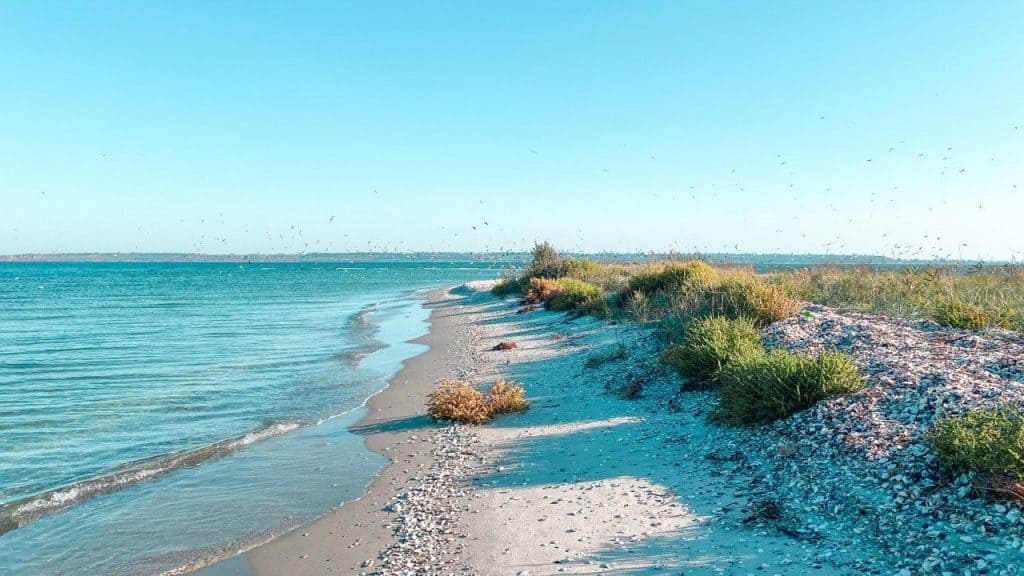
Kinburn Spit was the last stop on my itinerary, and to get there, I had to leave my car in a small, dusty parking lot at the local port in Ochakiv. As I sat in the shade of the only tree — mind you, even in September, it can get up to 30°C in the south of Ukraine — waiting for a barge to take me to Kinburn, I watched more people gather in the little port.
A small group of Kinburners, all traveling from the mainland back home, chatted quietly, sharing food and local gossip. Their soft murmur put me at ease before the journey across the Dnipro-Bug estuary on a very old barge that surprisingly stayed afloat against all odds.
Kinburn is a bit of terra incognita, even for Ukrainians. A strip of sandy, unpaved land, a national park and a sanctuary for birds and plants, Kinburn is hard to reach. It has, therefore, regularly lost the battle for attention to more accessible beaches on the mainland.
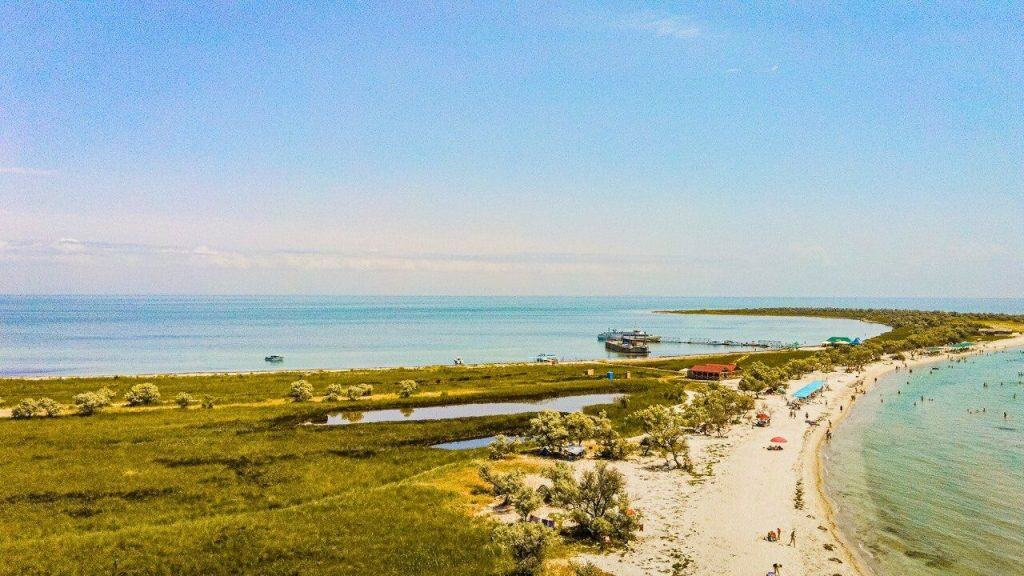
But it is worth the journey. Hugged by the fresh waters of the Dnipro-Bug estuary from the north and the salty waves of the Black Sea from the east, it is home to a small community of around 80 people, one of Europe’s largest fields of rare orchids, and a population of pink pelicans. It’s a place so serene that dolphins swim close to the shore.
Hopping off the barge in Kinburn, I was met by the local celebrity, a driver named Stepanych, whose phone number you would’ve come across online if you’d decided to travel to Kinburn before the full-scale invasion.
He’d put together a Frankenstein of a vehicle. A small bus propped up on massive, tractor-like wheels . This beast slowly moving through the sands of Kinburn, transporting locals and visitors alike between three villages, a little sea salt harvesting enterprise, and the Edge of the Earth—the tip of Kinburn.
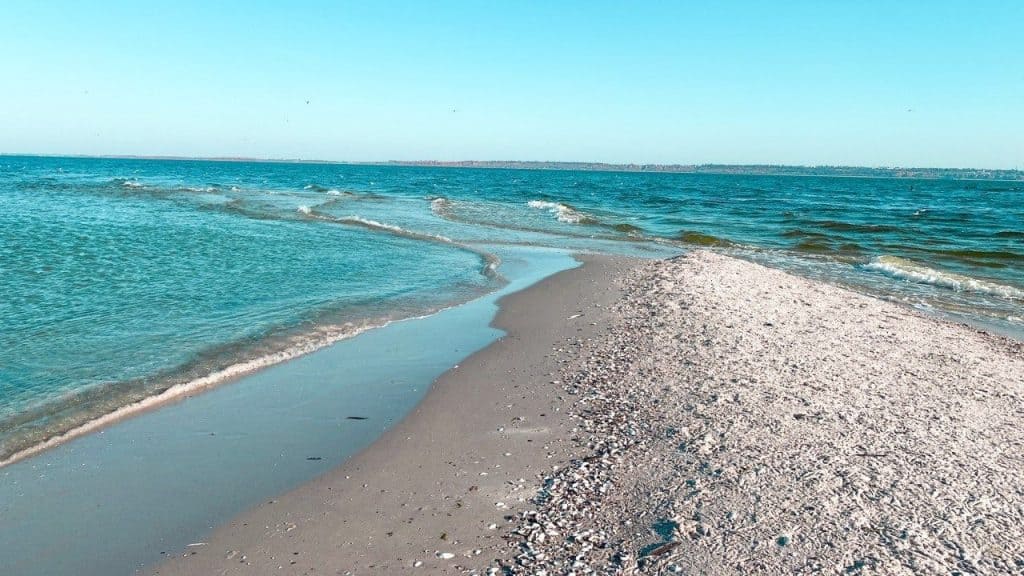
That September day, I was the only passenger on Stepanych’s bus, and he talked nonstop. About the Kinburn community. How harsh and lonely winters are in this part of the world. But how summer makes up for all the hardship.
Stepanych eagerly shared every travel tip he could think of, and as I stepped off his bus to walk the 30 minutes toward the Edge of the Earth, he said, with genuine care: “Just don’t go for a swim once you reach the tip of Kinburn. It might be tempting, but the currents are merciless. I’ll pick you up in an hour or so.”
And as I reached the Edge of the Earth, a serene, surreal little tip disappearing into the waves of the sea and the estuary I thought to myself: “Gosh! I’ve traveled far and wide. To Asia, Africa, and all across Europe. And all this time, these amazing adventures and stories to remember were here, in my own country. What a treat!”

wanderwithalex





